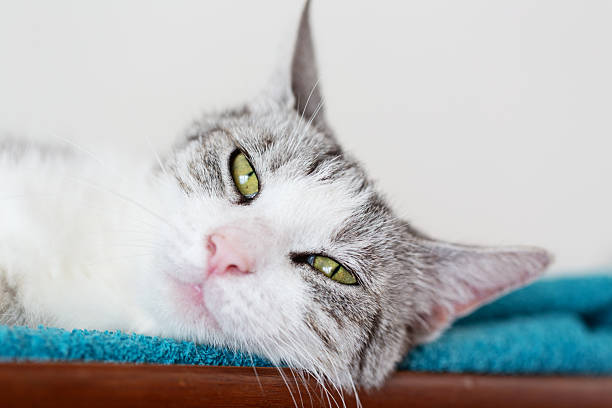
Finding the Best Brush for Short Hair Cat Owners
Share
Keeping your cat’s coat healthy and shiny isn’t just about looks — it’s about their comfort and wellbeing. Short-haired cats may not mat as easily as long-haired breeds, but they still shed, collect dirt, and benefit from regular brushing. The right grooming tool helps remove loose hair, stimulates natural oils, and keeps your home fur-free.
If you’re wondering what makes the best brush for short hair cat and how to choose one that keeps your feline looking fabulous, this guide will walk you through everything you need to know — from brush types to grooming tips.
Why Brushing Short-Haired Cats Matters
Many cat owners assume that short-haired breeds don’t need regular brushing — but that’s a common misconception. Even cats with sleek, low-maintenance coats like the British Shorthair, Burmese, or Domestic Shorthair benefit greatly from grooming.
Reduces Shedding
Short-haired cats shed just as much as their fluffier cousins, and regular brushing helps capture loose fur before it lands on your couch or clothes. Less shedding also means fewer hairballs — something every cat (and owner) can appreciate.
Promotes Healthy Skin and Coat
Brushing distributes your cat’s natural oils evenly across their coat, giving it a healthy shine and preventing dryness or dandruff. It also stimulates blood circulation, which can lead to healthier skin and stronger fur growth.
Builds Bonding Time
Cats love attention. Grooming sessions offer a calm, bonding experience that helps strengthen trust between you and your pet. It can also help desensitise anxious cats to handling, making vet visits and nail trims easier.
What to Look for in the Best Brush for a Short Hair Cat
When choosing the right grooming tool, consider your cat’s comfort and your convenience. Short-haired coats require specific brush types that can effectively remove loose fur without pulling or scratching the skin.
1. Bristle Brushes
Soft or medium-firm bristle brushes are ideal for smoothing and polishing the coat. They remove dust and distribute oils, leaving a glossy finish. Look for tightly packed natural or nylon bristles for the best results.
2. Rubber Brushes (Grooming Gloves)
Rubber brushes or grooming gloves are fantastic for short-haired cats because they mimic petting while grabbing loose hair. The gentle rubber nubs massage your cat’s skin, making it a relaxing experience they’ll actually enjoy.
3. Deshedding Tools
For cats that shed excessively, a fine deshedding brush (like a FURminator-style tool) can dig just deep enough to catch undercoat fur without irritating the skin. Use sparingly — once or twice a week — to prevent over-grooming.
4. Slicker Brushes
Slicker brushes are great for detangling and removing loose fur, though they’re typically used more for long-haired breeds. For short-haired cats, opt for one with soft, fine wires to avoid scratching sensitive skin.
How Often Should You Brush a Short-Haired Cat?
Unlike long-haired cats that need daily grooming, short-haired breeds usually do well with brushing two to three times a week. However, some high-shedding breeds or indoor cats may benefit from more frequent sessions — especially during seasonal shedding periods.
Signs You’re Brushing Too Much
-
Skin appears red or flaky
-
Your cat becomes irritated or tries to escape
-
Excessive hair loss in brushed areas
Always brush gently and follow the natural direction of your cat’s fur. Grooming should be enjoyable, not stressful.
How to Brush Your Short-Haired Cat: Step-by-Step
Even with the best brush for short hair cat, technique matters. Here’s how to keep things simple and stress-free:
Step 1: Choose a Quiet Spot
Pick a calm, familiar environment where your cat feels safe. Avoid noisy rooms or distractions.
Step 2: Let Them Sniff the Brush
Before you start, let your cat investigate the brush. This helps them associate it with something positive rather than threatening.
Step 3: Begin with Gentle Strokes
Start from the head and move toward the tail, brushing in the direction of hair growth. Be especially gentle around the belly and legs.
Step 4: Reward Good Behaviour
Keep a few treats handy. Rewarding your cat reinforces positive associations with grooming time.
Step 5: Clean the Brush Regularly
Remove collected hair after each session and wash the brush occasionally to prevent bacteria buildup.
Common Grooming Mistakes Cat Owners Make
Even the most loving cat owners sometimes make mistakes when grooming. Here’s what to avoid:
Brushing Against the Grain
Brushing in the opposite direction of fur growth can cause discomfort and even skin irritation.
Using the Wrong Brush Type
Some brushes designed for dogs or long-haired breeds can be too harsh for short coats. Stick to soft bristles or rubber-tipped tools.
Ignoring Sensitive Areas
Cats often have sensitive spots like their belly or tail base. Brush these areas carefully, watching for signs of discomfort.
Skipping Grooming Altogether
Even indoor cats collect dust, dead skin, and shed fur. Neglecting brushing can lead to dull coats, flaky skin, and increased shedding.
Grooming Tools Worth Considering the Best Brush for Short Hair Cat
At Total Pet Supplies, we stock a variety of high-quality grooming products that make brushing easy and enjoyable for both you and your pet.
🐾 Cat Grooming Gloves
Perfect for beginners or nervous cats. They turn petting into a grooming session, gently removing loose fur while massaging the skin.
🐾 Short-Hair Slicker Brushes
Designed with fine pins and a flexible pad to reach loose hair without scratching.
🐾 Deshedding Combs
For cats that shed more than average, these combs reach undercoats to catch extra fur before it lands on your furniture.
🐾 Soft Bristle Brushes
Ideal for daily coat maintenance and finishing touches. They leave your cat’s coat smooth and shiny.
All of these tools are available through Total Pet Supplies, shipped Australia-wide, and designed with your pet’s comfort in mind.
Tips for Keeping Your Cat’s Coat Healthy with the Best Brush for Short Hair Cat
While brushing is essential, overall coat health depends on several factors. Here are a few quick maintenance tips:
1. Feed a Balanced Diet
A shiny coat starts from within. Omega-3 fatty acids found in fish oil and premium cat foods help support skin and fur health.
2. Keep Hydration High
Cats that don’t drink enough water can develop dry, brittle fur. Ensure your cat always has access to fresh water or consider a cat fountain.
3. Control Fleas and Skin Conditions
Flea bites, dermatitis, or allergies can cause your cat to over-groom. Regularly check their skin and use vet-approved flea treatments.
4. Regular Vet Visits
Your vet can catch early signs of skin issues or nutrient deficiencies before they affect coat health.
When to Seek Professional Grooming
Most short-haired cats can be easily managed at home, but some situations call for professional help.
If your cat has:
-
Excessive dandruff or shedding
-
Bald patches or scabs
-
Trouble tolerating brushing
… then a professional groomer or vet can recommend specialised tools or treatments.
Final Thoughts - Best Brush for Short Hair Cat
Finding the best brush for short hair cat is all about balance — gentle enough to comfort, but effective enough to control shedding. Whether you prefer a soft bristle brush, rubber grooming glove, or deshedding comb, the goal is the same: to keep your cat’s coat sleek, clean, and healthy.
At Total Pet Supplies, we make grooming easy with trusted, cat-friendly tools shipped across Australia. Take the stress out of coat care and make brushing something both you and your feline friend can look forward to.
